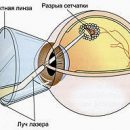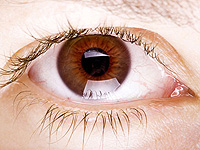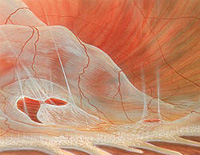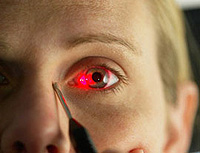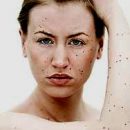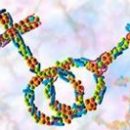Normally, any optical system, including the optical eye system, has a focus - the refractive point of light rays. With astigmatism, this point is absent. To become clear what pathology is we talking about, you can give the following example: Imagine that you set up a camera, tipping sharpness to some distant subject.
Content
Before getting a clear picture, you must display the camera from the so-called straw, that is, a blurry image. It is in such a fuzzy, a defocused image and a world appears in front of people suffering from astigmatism.
About the causes of astigmatism
In order to understand the causes of astigmatism, it will have to repeat the school course on the anatomy. So, point is the first: human eye - a complex optical system. Item second: refractive surface surfaces spherical and their optical axes coincide. If at school you were excellent studies on anatomy, then surely remember such important components of our eye, like a cornea and a crystal.
So, when the refractive surfaces of the cornea and lens do not possess this very perfect sphericity, astigmatism occurs. In most cases, approximately every fourth inhabitant of the planet, the difference in the refraction is small, that is, there is a so-called physiological astigmatism degree to 0.5 diopters.
Dioptria - focal value: 0.5 D corresponds to a lens with a focus of 2 meters. Man does not feel such an optical error, and it does not need to be corrected by glasses. But if the refractive force, in other words, the degree of astigmatism of different meridians exceeds 1.0 dioptia, then this, as a rule, significantly affects visual functions.
Since astigmatism is a congenital disease, then it can take themselves at any age, and most optionally in childhood. And yet most often it is diagnosed with an ophthalmologist, examining children of the second year of life. Most often, the Children of this age the doctor can already give a forecast for the further development of the visual system.
The baby is carried out inspection of the eye dna, determine the presence of myopia or hyperopia. In case of detection of deviations for a small patient, an individual mode of inspection and treatment is developed.
About symptoms and treatment of astigmatism
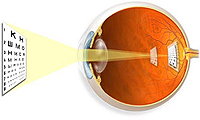 How parents can recognize the disease? The appearance of complaints about the fact that it is badly visible, the pain head and in the outbreak area, fast fatigue in the visual load - all this may indicate the presence of astigmatism. To clarify the diagnosis, selection of glasses or contact lenses, an inspection of the eyepiece is required. If the children's ophthalmologist confirms, the means of correction in astigmatism are prescribed depending on the subjective tolerance and age of the patient.
How parents can recognize the disease? The appearance of complaints about the fact that it is badly visible, the pain head and in the outbreak area, fast fatigue in the visual load - all this may indicate the presence of astigmatism. To clarify the diagnosis, selection of glasses or contact lenses, an inspection of the eyepiece is required. If the children's ophthalmologist confirms, the means of correction in astigmatism are prescribed depending on the subjective tolerance and age of the patient.
It is usually recommended to constantly wear glasses. To the use of contact lenses in childhood, doctors resort extremely rarely. Also for vision correction during astigmatism, cylindrical glasses use. Operational treatment of astigmatism is possible after reaching the twenty-year-old patient, taking into account all the features of the course of the disease.
For successful treatment, it is necessary to comply with the mode of prophylactic visits of an ophthalmic cabinet. As a rule, children with such pathology are recommended to attend a doctor 2 times a year. If your child wears glasses, you need to carefully follow the growth of the eyes and change the optics in a timely manner. Unlike other eye diseases, for example, myopia, astigmatism does not progress. Therefore, when complying with non-good rules appointed by the doctor, it can be kept under control.
On the prevention of astigmatism
Few of us, adults, boasts good eyesight. Every day, trying to guess the number of the driving bus or consider the price tag on the counter, you know what you see no longer as in childhood.
However, in today's achievements of ophthalmology, it is not necessary to despair. The choice of funds for vision correction is huge. With the help of glasses and lenses, you can not only improve vision, but to give appearance to a certain charm. And with the advent of his own child, it is time to remember the advice of your parents. Here are a few that will help keep your child's eyes healthy.
Ideally, the first time to show the crumb of the ophthalmologist is necessary up to 4 months. Such an early inspection makes it possible to warn many diseases, for example, the dacryocystitis common among babies is inflammation of the lacrimal bag.
Dacryocystitis of newborns usually occurs due to the preservation of the germs, closing the lower departure of the tear-nose channel. The optimal age of treatment is 2-3 months, at an older age, the rehabilitation process is more difficult.
After the baby is a year, it is desirable to visit a specialist again and check the optical possibilities of the child's eye. At this consultation, the doctor must give you useful tips on the visual regime of the crumb.
Three years old, that is, by the time of receipt of the kindergarten or to school, if no pathologies have been identified, you should again bring the child to the reception to the ophthalmologist. In the presence or detection of the baby from the eye of the eye pathology, it will be appointed individual treatment with the limitation of visual load. Subsequent, current control over compliance with the recommendations of an ophthalmologist in a kindergarten is carried out by educators, and at school until the 4th grade - teacher.
If the baby has vision problems, then the oculist can recommend him a certain place (part, row) in the class. To do this, you must take a certificate from a specialist. Control the development of the visual system of the child is necessary until the processes of active growth continue, that is, up to 16 years.
Taking into account the fact that in 75-80% of eye diseases may be associated with other pathologies, do not forget to regularly pass with the child to the dispensary system and visit other specialists.

